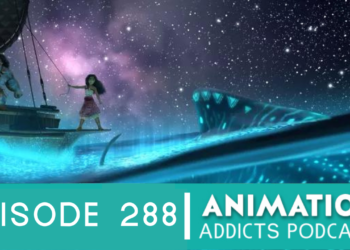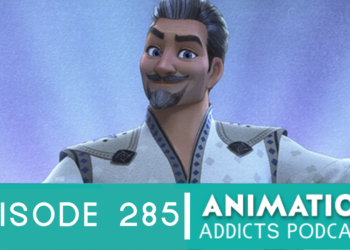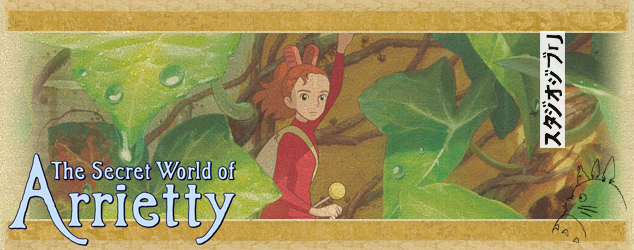
Watching a lot of Studio Ghibli films in quick succession, one through-line will become clear: most of their best work uses its fantasy elements not only as an exciting display of creativity for the audience, but also as a way to highlight its protagonist’s longing. So many Ghibli leads – Chihiro in Spirited Away, Haru in The Cat Returns, Satsuki and Mei in My Neighbor Totoro – start the film isolated from those around them, wishing that there were new worlds for them to discover, and frustrated in the fact that all they can see is their own. The release comes when those worlds come to light and their lives seem to open up to infinite possibilities. In The Secret World of Arrietty, it’s not just our world that longs for another – that other world longs for ours too.
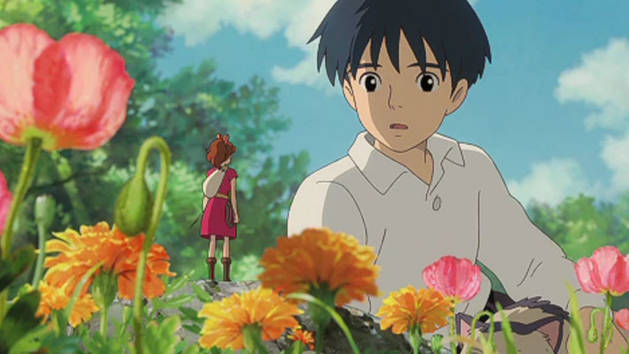
While the film starts with a quiet adolescent boy named Shô, arriving to live with relatives away from absent parents, it soon becomes clear that he is not our protagonist, or at least not our only protagonist. We meet Arrietty as Shô discovers her hiding in the grass behind a bay leaf she has collected. Then, we leave the real world behind and follow her instead. Arrietty’s world is underneath Shô’s feet – she’s bigger than an ant, but not quite as big as a mouse, and her family lives in a small space inside the floorboards of Shô’s house. They call themselves borrowers – when we meet Arrietty she’s eagerly awaiting her first borrowing mission, where she’ll venture into the big house with her stoic father to borrow some supplies like sugar, other food, and tissue. They only take what they might need to keep them going, and never too much to stand out.
Arrietty has been told that she must never be seen by a human. If they knew the borrowers existed it could threaten Arrietty’s safety. But when she’s glimpsed by Shô, his interest is never threatening. After the initial shock, he is enthusiastic bordering-on-desperate to make contact with Arrietty again. This desperation is given heartbreaking color when we learn that he’s at the house awaiting a life-threatening heart operation. Shô has been told he mustn’t put himself through too much stress or excitement, but excitement is all he wants when he’s left in the company of nobody but two older relatives and his own worried thoughts.
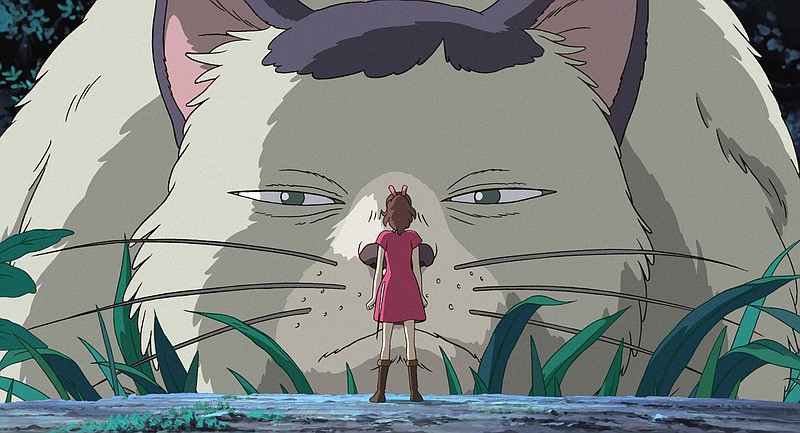
Arrietty herself is isolated. Similar to Shô, she only has her parents to talk to. The opening of the film details her first borrowing mission. Arrietty’s excitement is transposed onto us in a sequence that expertly throws the audience into a new world and allows them to explore it in rich detail. From the get-go, The Secret World of Arrietty is one of Ghibli’s most exhilarating movies, painting a vivid portrait of its fantasy by focusing on the smallest touches. The film luxuriates in the process of the borrowing, just as Arrietty does; she watches in wonder and applauds as her father uses a makeshift grappling hook to hoist himself down a kitchen cupboard, and scales another by sticking double-sided tape to his hands and feet. We watch him apply each piece with Arrietty’s same rapt attention, and each moment is filled with her same breathless anticipation.
Hiromasa Yonebayashi (who has since gone on to direct Ghibli hit When Marnie Was There and has his third feature Mary and the Witch’s Flower slated for this year) was 36 when he directed The Secret World of Arrietty, his first feature. It’s incredible to think that he’d never directed a film before, since his storytelling skill here is absolutely on a par with the work of Hayao Miyazaki or Isao Takahata.
But it turned out okay in the end. It’s hard to think that any other director, at any other time, could have turned out an adaptation as spirited and full of life as Yonebayashi did in 2010.
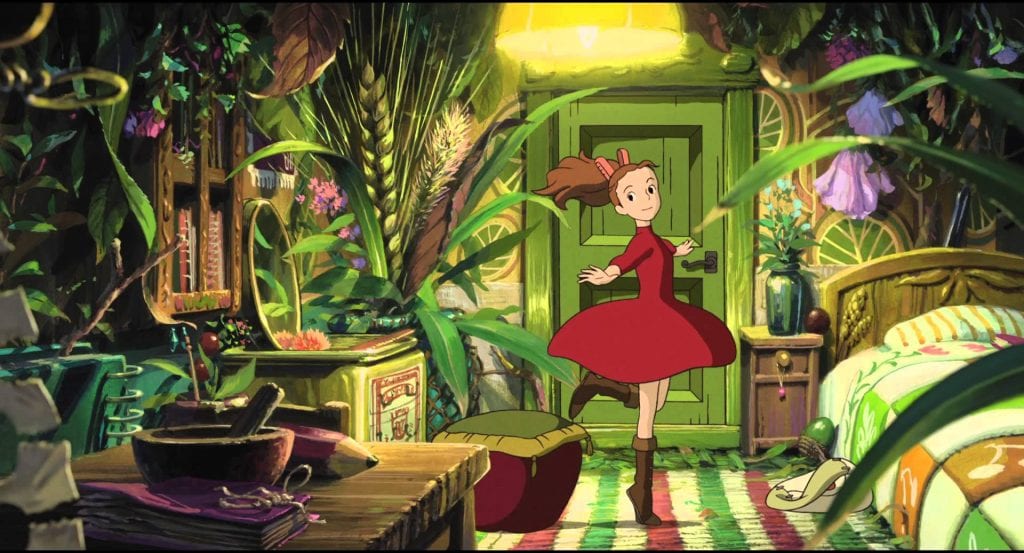
The Secret World of Arrietty has an unstoppable momentum packed with fun and creativity, but it’s also resoundingly emotionally resonant. After its young protagonists start to explore each other’s worlds, they must come to terms with the fact that neither can stay there for very long. Arrietty is in danger amongst humans, and quite apart from the fact that Shô could never be a part of the borrowers’ world – he tries at one point to offer them a new kitchen but realizes that his interference is only a source of destruction and fear – he has to also come to terms with the fact that he might be living out the last days of his life.
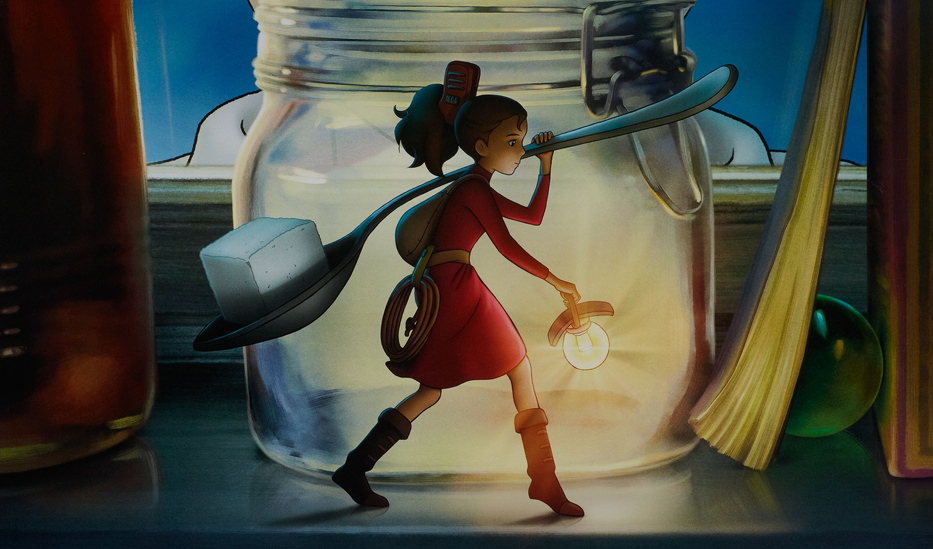
The film’s frank treatment of his mortality is surprising and refreshing, even more so in the inconclusive way the film ends. It would have felt like a cheat if we had been reassured – Shô’s fate is up for us to hope for, just as Arrietty does. It’s this unflinching uncertainty that makes the film special.
While Miyazaki and Takahata are approaching the ends of their careers, Hiromasa Yonebayashi is only just getting started. With The Secret Life of Arrietty as his extraordinarily impressive calling card, he’s already begun to comfortably fill the shoes of those animation titans. Arrietty was the birth of a master, with an enormous capacity for empathy, creativity, and skill. It’s one of Ghibli’s very best.
What do you think of The Secret World of Arrietty? Place your thoughts in the comment section below.
Edited by: Hannah Wilkes



